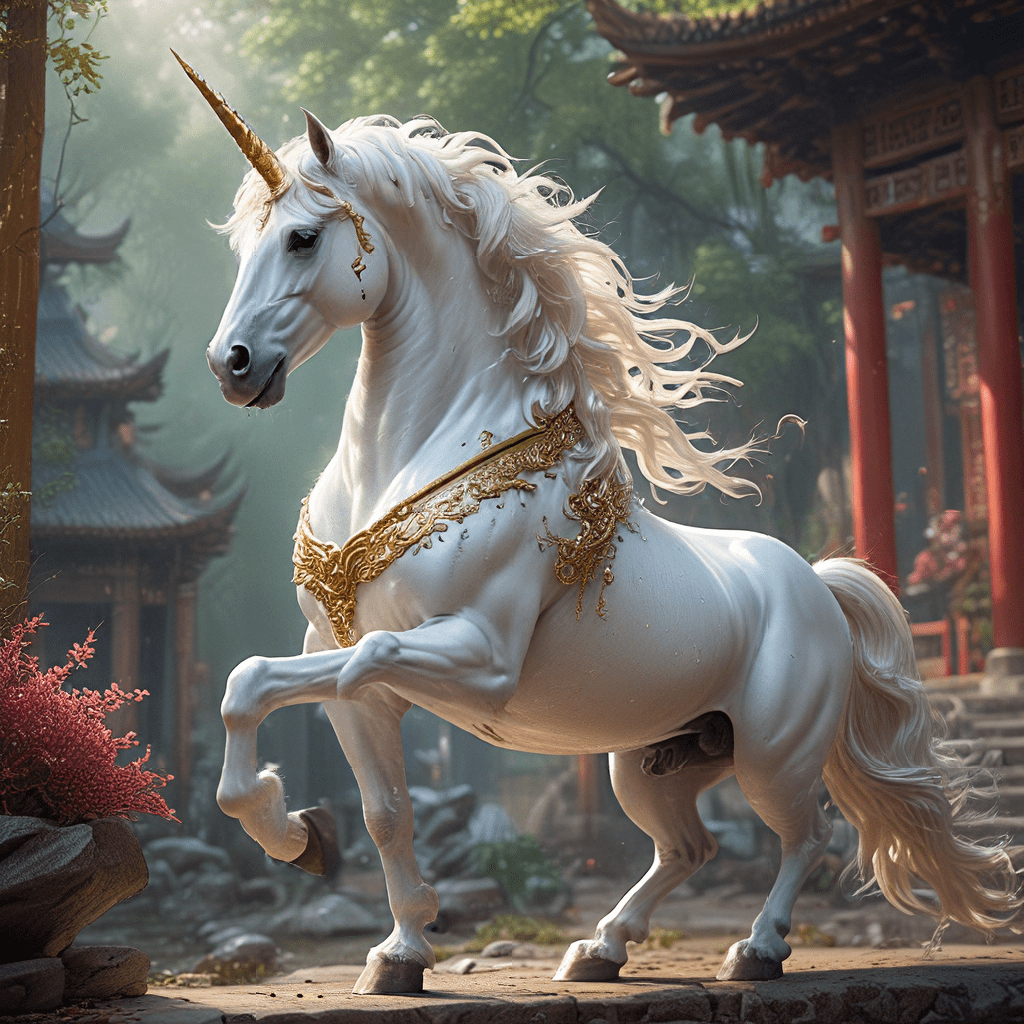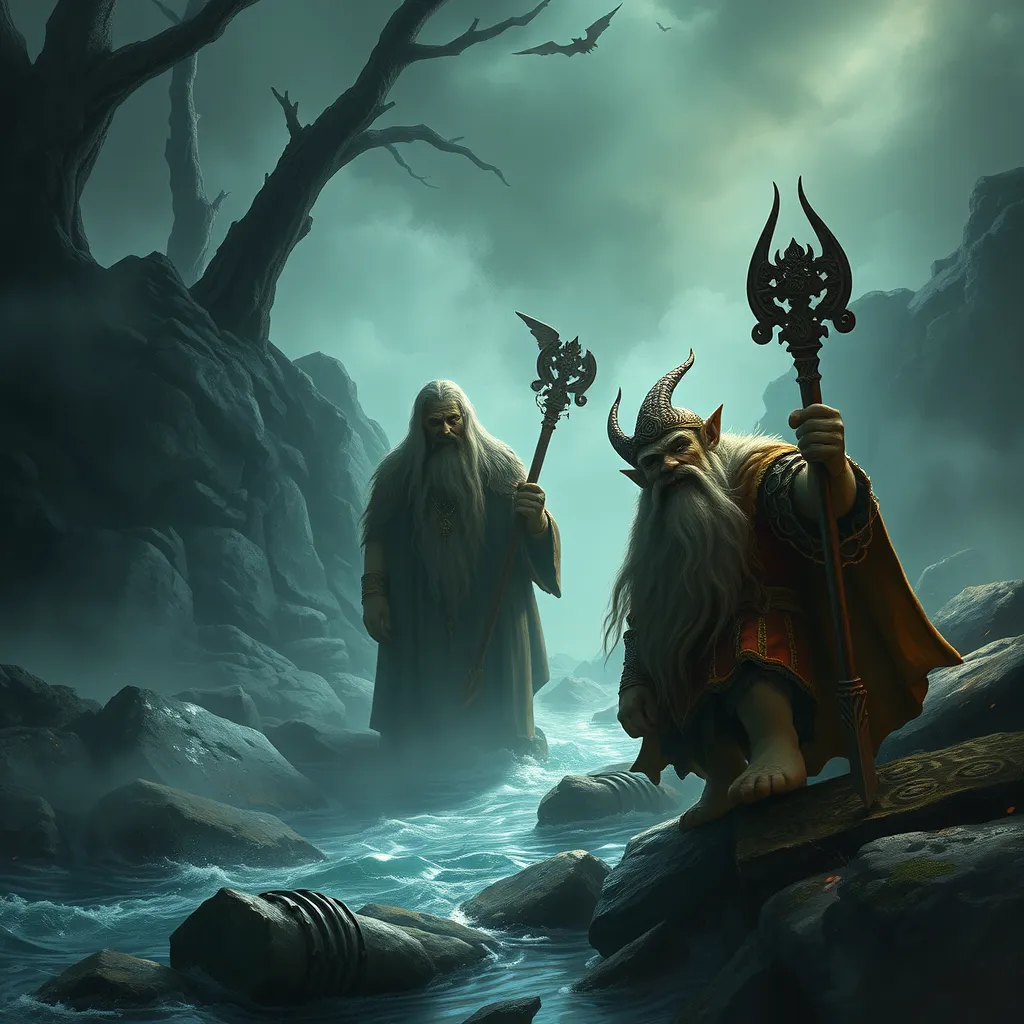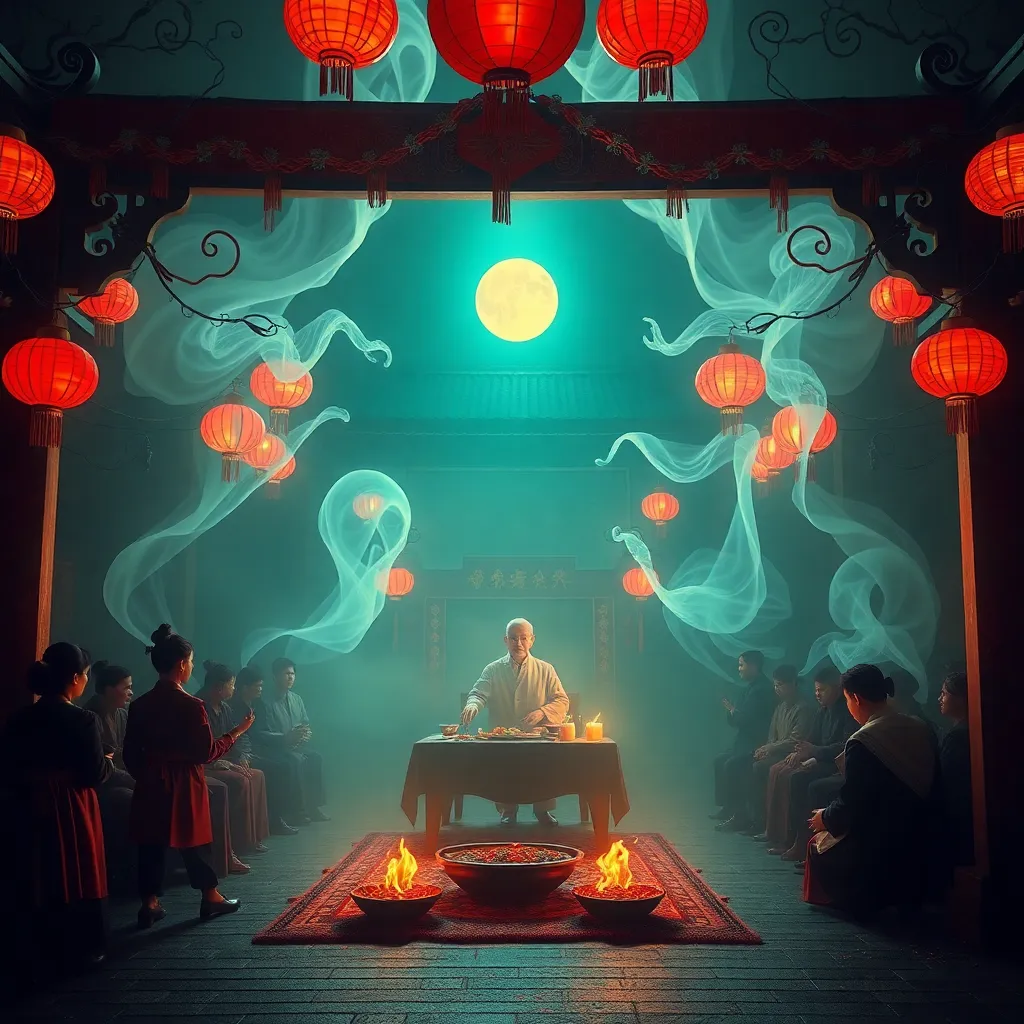The Unicorn’s Magic: Unraveling the Unicorn in Chinese Mythology
The Unicorn’s Roots in Ancient China: A Journey Through Time
The unicorn, a creature of myth and legend, holds a special place in Chinese culture. Known as *qi lin* in Chinese, the unicorn is not a horse with a single horn, as it is often depicted in Western cultures. Instead, it is a mythical beast with a unique appearance, often described as a combination of different animals. Its origins can be traced back to ancient Chinese texts, with early references dating back to the Zhou Dynasty (1046-256 BCE).
The unicorn was first mentioned in the *Book of Songs*, one of the earliest collections of Chinese poetry, dating back to the 11th century BCE. This early mention suggests that the unicorn held cultural significance even in those ancient times. The *Book of Rites*, a classic Confucian text, further cemented the unicorn’s place in Chinese mythology, describing it as a benevolent and auspicious creature.
Over the centuries, the unicorn’s image evolved, appearing in various artistic representations and literary works. Its enduring presence in Chinese culture is a testament to its enduring appeal and the powerful symbolism it embodies.
A Creature of Harmony: Exploring the Unicorn’s Symbolic Significance in Chinese Culture
The unicorn, with its unique blend of animal characteristics, represents the harmony of nature and the balance of opposing forces. In Chinese culture, the yin and yang, representing complementary forces of feminine and masculine energies, are critical to understanding the world. The unicorn embodies this balance, symbolizing peace, prosperity, and good fortune.
The unicorn’s association with harmony and prosperity is deeply ingrained in Chinese culture. It is often depicted as a guardian of peace and prosperity, bringing good fortune to those who encounter it. Its presence is seen as a sign of auspiciousness and a harbinger of good fortune.
Furthermore, the unicorn’s gentle nature and its association with benevolent qualities have solidified its position as a symbol of virtue and righteousness. In Chinese lore, the unicorn is believed to possess a pure heart and a noble spirit, making it a symbol of moral uprightness and spiritual enlightenment.
The Unicorn as a Celestial Messenger: Its Role in Divine Communications
In Chinese mythology, the unicorn is not just a mythical creature but a celestial messenger. It is believed to be a conduit between the heavens and the earth, bringing messages from the divine realm. It is often depicted as a creature that carries divine messages, conveying the will of the gods to humanity.
This association with the divine realm further enhances the unicorn’s symbolic significance. It represents connection to the spiritual world and the power of divine intervention. Its appearance is seen as a sign of divine favor, signifying that the gods are watching over and guiding humanity.
The unicorn’s ability to communicate with the divine realm makes it a powerful symbol of hope and guidance. It assures humanity that they are not alone in their struggles and that the gods are always present to offer support and direction.
The Unicorn’s Power: Magical Abilities and Their Impact on Human Affairs
The unicorn is not only a symbol of harmony and a celestial messenger but also possesses magical abilities. In Chinese mythology, the unicorn is believed to have the power to heal, bring good fortune, and ward off evil spirits.
Its healing powers are particularly noteworthy. It is said that the unicorn’s horn possesses medicinal properties and can cure diseases. This belief is reflected in traditional Chinese medicine, where the unicorn horn is still used in some remedies.
Furthermore, the unicorn’s presence is believed to bring good fortune and prosperity. Its appearance is seen as a sign of auspiciousness, promising good luck and success. It is often depicted in art and literature as a symbol of abundance and prosperity.
The Unicorn and the Emperor: A Connection of Power and Divinity
The unicorn’s close association with the emperor further reinforces its significance in Chinese culture. In ancient China, the emperor was considered the Son of Heaven, chosen by the gods to rule. The unicorn, as a celestial messenger, was believed to be a symbol of the emperor’s divine mandate.
The unicorn was often depicted in imperial art and ceremonies, signifying the emperor’s power and legitimacy. The emperor’s throne was often adorned with unicorn imagery, representing the emperor’s connection to the divine and the legitimacy of his rule.
The unicorn’s association with the emperor solidifies its role as a symbol of authority, power, and divine favor. It embodies the concept of the emperor’s divine right to rule and the connection between the earthly realm and the heavenly realm.
The unicorn’s presence in Chinese mythology is a testament to its enduring appeal and the powerful symbolism it embodies. From its roots in ancient Chinese texts to its depiction in art and literature, the unicorn continues to captivate and inspire generations of Chinese people. Its significance extends far beyond its mythical nature, representing harmony, celestial connection, magical abilities, and a link to the divine realm.
The Unicorn’s Presence in Literature and Art: Depicting the Mythical Creature
The unicorn’s captivating spirit has inspired countless literary and artistic representations throughout Chinese history. From ancient poems and scrolls to intricate ceramics and jade carvings, the unicorn’s image has been woven into the fabric of artistic expression.
In literature, the unicorn’s presence is deeply rooted in ancient Chinese poetry. The *Book of Songs*, dating back to the 11th century BCE, features early references to the unicorn, highlighting its symbolic significance even in those ancient times. Later poets, like Li Bai (701-762 CE) and Du Fu (712-770 CE), renowned for their contributions to Tang Dynasty poetry, incorporated the unicorn into their works, further cementing its place in literary tradition.
The unicorn’s image also found its way onto various artistic mediums. Ancient Chinese paintings depict the unicorn as a majestic creature, often adorned with intricate patterns and vibrant colors. The unicorn’s horns were also a popular motif in jade carvings, symbolizing prosperity and good luck. In ceramics, the unicorn’s image graced porcelain vases, reflecting the unicorn’s association with elegance and refinement.
The unicorn’s presence in art and literature not only showcases its visual and literary appeal but also highlights its enduring cultural significance. Its image has been used to convey a wide range of themes, from the harmony of nature to the connection between the earthly and celestial realms.
The Unicorn and the Taoist Connection: The Myth’s Relationship with Philosophical Thought
The unicorn’s presence in Chinese mythology extends beyond its symbolic significance to its connection with Taoist philosophy. The mythical creature finds a deep resonance with Taoist principles, particularly the concept of balance and harmony embodied in the yin and yang.
Taoism, a philosophical and religious tradition, emphasizes the importance of living in accordance with the natural order of things. The unicorn, with its unique blend of animal characteristics, represents the harmonious balance of opposing forces. It embodies the yin and yang, the complementary feminine and masculine energies that govern the universe.
The unicorn’s association with the natural world further strengthens its connection with Taoist thought. Its gentle nature and its association with benevolent qualities resonate with Taoist principles of compassion and living in harmony with nature.
Furthermore, the unicorn’s ability to communicate with the divine realm aligns with Taoist beliefs in the interconnectedness of all things. The unicorn serves as a bridge between the human world and the spiritual realm, signifying the harmony and unity that Taoism emphasizes.
Theories of the Unicorn’s Origins: Legends and Scientific Perspectives
The unicorn’s existence as a mythical creature has sparked endless speculation about its origins. While the unicorn is undoubtedly a product of human imagination, various theories attempt to explain its roots in Chinese mythology.
One prominent theory suggests that the unicorn was inspired by real animals. It is possible that the mythical creature’s image was based on various animals, including the rhinoceros, the antelope, and the deer. These animals, with their unique features, may have served as the inspiration for the unicorn’s composite appearance.
Another theory proposes that the unicorn’s image was born from the Chinese people’s desire to represent the harmony of nature. The unicorn’s blend of animal characteristics reflects the interconnectedness of the natural world and the balance of opposing forces.
From a scientific perspective, some scholars suggest that the unicorn’s image was influenced by the discovery of fossils. Ancient Chinese people may have encountered fossils of extinct animals, such as the rhinoceros, and interpreted them as the remains of mythical creatures, including the unicorn.
Regardless of the precise origins of the unicorn, its enduring presence in Chinese culture is testament to its power as a symbol of harmony, balance, and the connection between the earthly and celestial realms.
The Unicorn’s Lasting Legacy: Its Influence on Modern Chinese Culture
The unicorn’s influence on Chinese culture extends beyond its ancient roots. Even in modern times, the unicorn continues to hold a special place in the hearts and minds of Chinese people.
The unicorn’s image continues to appear in modern art, literature, and popular culture. From animated films to contemporary paintings, the unicorn’s captivating presence remains a source of inspiration.
Furthermore, the unicorn’s symbolism of harmony and good fortune continues to resonate with contemporary Chinese society. In a world characterized by rapid change and complexity, the unicorn’s message of balance and unity continues to offer solace and hope.
The unicorn’s legacy is also evident in its continued use as a symbol of national pride and cultural heritage. The mythical creature serves as a reminder of the rich history and enduring traditions that have shaped Chinese culture.
The unicorn’s enduring presence in modern Chinese culture is a testament to its powerful symbolism and its ability to connect with the human spirit across generations.
The Unicorn as a Symbol of Hope and Resilience: A Timeless Message
The unicorn’s message of hope and resilience transcends time. In a world facing challenges, the unicorn’s ability to overcome obstacles and embody harmony offers a sense of comfort and inspiration.
The unicorn’s connection to the divine realm reinforces its message of hope. It reminds us that even amidst difficulties, there is a higher power watching over us and guiding us towards a brighter future.
The unicorn’s resilience is also a powerful symbol. Its ability to navigate the complexities of the world and emerge unscathed offers a message of perseverance and strength.
The unicorn’s timeless message of hope and resilience continues to inspire generations of Chinese people. It serves as a reminder that even in the face of adversity, there is always reason to believe in a better tomorrow.
FAQ
What is the Unicorn’s role in Chinese mythology?
The unicorn, known as *qi lin* in Chinese, is a mythical creature that embodies harmony, balance, and celestial connection. It is believed to be a messenger from the gods, carrying messages of good fortune and prosperity.
What are some of the unicorn’s magical abilities?
In Chinese mythology, the unicorn is believed to have the power to heal, bring good fortune, and ward off evil spirits. Its horn possesses medicinal properties and can cure diseases.
What is the link between the unicorn and the emperor?
The unicorn is closely associated with the emperor in Chinese culture, representing his divine mandate and legitimacy. It is depicted in imperial art and ceremonies as a symbol of authority, power, and divine favor.
How has the unicorn’s presence influenced modern Chinese culture?
The unicorn’s image continues to appear in modern art, literature, and popular culture, serving as a reminder of the rich history and enduring traditions that have shaped Chinese culture. Its symbolism of harmony and good fortune continues to resonate with contemporary society.



